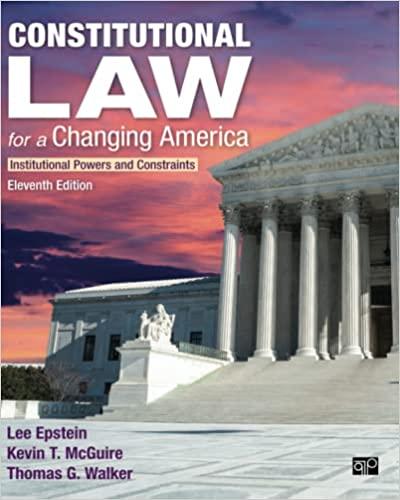Question
Q1 The U.S. has a common law system, meaning law is developed by judges who issue opinions when deciding cases.The principles announced in these cases
Q1
The U.S. has acommon lawsystem, meaning law is developed by judges who issue opinions when deciding cases.The principles announced in these cases becomeprecedentthat should be followed when judges later decide similar cases.The caseBrown v. Board of Educationshows however, that the common law can beflexibleas well.Answer the following questions about the caseBrown v. Board of Education:
a.Plessy v. Fergusonis the case that was overturned by the Brown case.What was the situation in the Plessy case?What did the court decide in that case?
b.What was the situation in theBrown v. Board of Educationcase?What was the court's decision in theBrowncase?
c.What constitutional amendment was the basis for the court's decision in both cases?What does this Amendment guarantee citizens of the United States?
Q2
According to the textbook, Federal courts have limited jurisdiction to hear cases involvingfederal questionsanddiversity of citizenshipcases. Explain what these two terms mean.
a.federal questions
b.diversity of citizenship
Do state courts have jurisdiction over these types of cases as well?Explain.
Q3
Briefly define each of the following terms regarding the litigation process:
1. complaint
2. deposition
3. class action
4. statute of limitations
5. pretrial motions
Q4
Distinguish between the three major methods of alternative dispute resolution (ADR)negotiation, mediationandarbitration.Give at least two reasons why ADR is preferable to filing a lawsuit and going to court.
Step by Step Solution
There are 3 Steps involved in it
Step: 1

Get Instant Access to Expert-Tailored Solutions
See step-by-step solutions with expert insights and AI powered tools for academic success
Step: 2

Step: 3

Ace Your Homework with AI
Get the answers you need in no time with our AI-driven, step-by-step assistance
Get Started


